
Rosa Parks (1913–2005) is best known for her refusal to give up her seat to a white man on a crowded bus in Montgomery, Alabama, on December 1, 1955. Her arrest sparked the Montgomery Bus Boycott, a pivotal event in the civil rights movement that ultimately led to the dismantling of Jim Crow segregation. Rosa Parks became an icon of the movement, celebrated for this single courageous act of civil disobedience, but she is often characterized by misconceptions. Contrary to popular belief, Parks was not a demure seamstress who chose not to stand because she was physically tired. Her calm demeanor hid a militant spirit forged over decades. Learn more about her and her life by exploring these primary sources.
Explore the sites and online exhibitions listed below. Ask students what they can learn from these primary sources about why Rosa Parks took her stand against segregation, and about the organizations and movements that participated in the struggle. They might compare that to what they learn from a textbook or other secondary source and then write a possible update for the secondary source.
It's important that students understand the difference between primary and secondary sources. Visit here for a solid definition and see some examples.
Rosa Parks: In Her Own Words showcases rarely seen materials that offer an intimate view of Rosa Parks and documents her life and activism—creating a rich opportunity for viewers to discover new dimensions to their understanding of this seminal figure.
This gallery showcases a selection of items from the Rosa Parks Papers at the Library of Congress, a gift from the Howard G. Buffett Foundation. This collection contains thousands of items that document the life, work, and legacy of this civil-rights legend.
In honor of the birthday of civil rights legend Rosa Parks, this blog highlights the many cards and letters students wrote for Ms. Parks over the years.
The Rosa Parks Collection, which is on loan to the Library for 10 years from the Howard G. Buffett Foundation, spans from 1866-2006 and contains 7,500 items and 2,500 photographs.
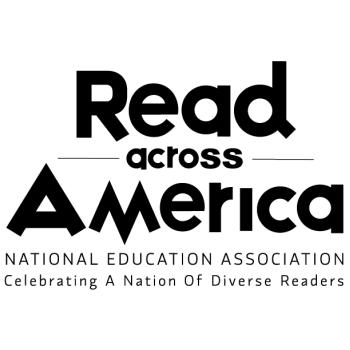
Join NEA’s Read Across America to celebrate a nation of diverse readers with these recommended books, authors, and teaching resources that represent an array of experiences and cultures.
Read Across America has celebrated books and reading since 1998. This year, there are even more opportunities:
• Encourage adults to spend more time reading to children
• Share stories that raise up the many voices that need to be amplified and heard
• Use books to help students discover their own voices and learn from the voices of others
• Encourage readers to believe in themselves and use their voices and stories for positive change
Use the Read Across America Day calendar, Build Your Stack® posts, and ReadWriteThink.org resources to support these efforts.
Join NEA to celebrate a nation of diverse readers with these recommended books, authors, and teaching resources that represent an array of experiences and cultures.
NEA is excited to bring Read Across America year-round to help motivate kids to read, bring the joys of reading to students of all ages, and make all children feel valued and welcome.
Review the recommended titles in this calendar and the Read Across America poster.
This NCTE initiative is focused exclusively on helping teachers build their book knowledge and their classroom libraries.
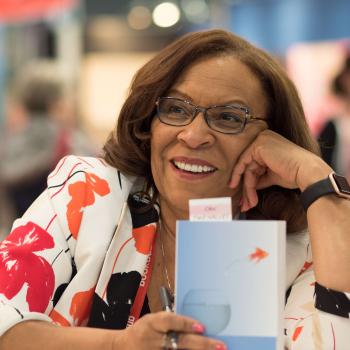
Known for such realistic fiction such as Out of My Mind, historical fiction such as Copper Sun, as well as adaptations such as Romiette and Julio, author and educator Sharon Draper has won multiple Coretta Scott King Awards for her work. She is the 2011 recipient of the Lifetime Achievement Award for contributions to the field of adolescent literature by the Assembly on Literature for Adolescents of the National Council of Teachers of English (ALAN), the 2015 recipient of the Edwards Award for her significant and lasting contribution to young adult literature, and NCTE's 2016 Charlotte Huck Award.
Among Sharon Draper’s most popular books are the Hazelwood Trilogy (Tears of a Tiger, Forged by Fire, Darkness before Dawn) and the Jericho Trilogy (The Battle of Jericho, November Blues, Just Another Hero). Obtain copies of the books and preview each title on a classroom projector (each page contains an overview and summary; some contain audio previews as well).
Give students time to choose a book and then form literature circles around each title. After individual book groups have finished, form new groups that bring the books from each trilogy together to discuss how the books relate to an build on one another.
Draper’s official site contains rich resources on each of her books as well as specific resources for students, teachers, and librarians.
Among a variety of resources on Sharon Draper and her work is a collection of video interviews discussing specific works and teaching and writing more broadly.
This site offers biographical information and profiles of many of Draper’s works.
A conversation with Sharon Draper around #WhyIWrite.
This blog post from YALSA's The Hub recognizes Draper's contributions to the field and shares some student testimonials about favorite titles.
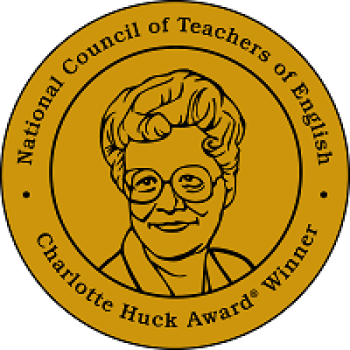
The NCTE Charlotte Huck Award® for Outstanding Fiction for Children honors the work of educator Charlotte Huck, who championed the classroom use of storybooks to teach reading and language arts. The award was established in 2014 to promote and recognize excellence in the writing of fiction for children that invites compassion, imagination, and wonder.
After sharing one or more of the winning, honored, or recommended titles as a classroom read-aloud, invite students write and illustrate their own story in which someone learned how to be more compassionate or to feel empathy for those who are different from themselves.
Allow students to decide to tell a story from their own lives or to create characters and imagined situations that would inspire others to be more compassionate. Share tools such as the Story Map and Cube Creator to help students plan and generate ideas. Arrange for a time for students to share their stories with classmates or with younger students.
This festival, hosted by the University of Redlands, brings together authors and illustrators of children’s literature with teachers, librarians, and families.
Charlotte Huck’s HarperCollins biography page includes a link to her book Princess Furball, illustrated by Anita Lobel.
NCTE’s page for its children’s book awards, also including the NCTE Orbis Pictus Award® for Outstanding Nonfiction for Children.

Sponsored by the Alliance for Excellent Education, Digital Learning Day has since 2012 encouraged teachers to share and celebrate effective teaching and learning that showcases innovation in the use of digital instructional technology. Though Digital Learning Day does promote the effective use of contemporary tools and technologies, it is truly a day to reflect on the enhanced or transformed learning those tools support.
Ask students to reflect on something they recently learned how to do. After a few minutes to write or talk with a partner, have students share what they learned as you record their topics for everyone to see. Then lead a discussion around the role digital tools played in the different learning students shared.
-
How many of the examples were about learning to use a new digital tool?
-
How many examples featured students using a digital technology to facilitate or support their learning?
-
Which examples can students imagine doing differently with the support of a digital tool?
Then have students reflect on the varied ways digital learning plays a part in their everyday lives.
This page houses a collection of resources from past Digital Learning Days.
Find inspiration from a lesson plan from the Alliance for Excellent Education, arranged into themes such as language arts, STEM, and digital citizenship.
This collection of ReadWriteThink resources offer additional inspiration for considering the role digital technology can play in student learning.
Need help defining 21st Century literacies or the implications for classroom practice? This collection of NCTE documents can help.
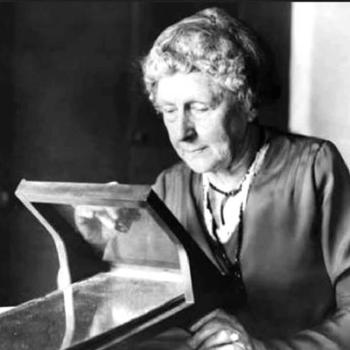
Annie Jump Cannon was born today in 1863. Cannon, who was deaf for nearly her entire career, studied astronomy in college and is responsible for developing a system for classifying stars based on decreasing order of surface temperature.
Turn students' attention to the stars by pointing them toward the StarDate Constellation Guide, Enchanted Learning's Constellation page, and Norm McCarter's Constellation Legends. After choosing and constellation and reading about it across multiple sources, students can share their learning by creating a trading card for their constellation using the Trading Card Creator interactive or Trading Cards app.
This website sponsored by the Museum of Flight offers additional information on Cannon’s career and photos of her lab and other related images.
Learn about the American Astronomical Society award honoring Cannon at this website.
Cannon's page on this site is one of many profiles of femals astronmers, both historic and cotemporary.
This website offers students an image of the Google homepage honoring Cannon, as well as a chance to take a Star Quiz.

Matt de la Peña is known for his young adult novels such as Ball Don't Lie and We Were Here that depict teens whose lives are shaped by the stresses of poverty and neglect. He also collaborated on A Nation's Hope: The Story of Boxing Legend Joe Louis, a book for younger readers illustrated by Kadir Nelson. "Last Stop on Market Street," written by Matt de la Peña, is the 2016 Newbery Medal winner.
Share with students de la Peña’s essay Sometimes The 'Tough Teen' Is Quietly Writing Stories. Have students read and discuss the essay in groups, focusing on questions such as
- What attitudes toward literacy (reading and writing) does de la Peña convey?
- What stories does he tell to get these points across?
- How does he craft or structure the stories to make them both interesting and effective in communicating the points?
Then invite students to write a literacy narrative of their own, selecting a few key stories to shape into an essay that conveys a point they wish to make about reading and/or writing in their own lives.
Matt de la Peña’s official site offers biographical information and news about his books and upcoming projects.
In this video interview hosted by the Library of Congress, de la Peña discusses his efforts to represent aspects of the Mexican-American experience to readers.
This article from The New York Times reports on the removal of de la Peña’s books from classrooms in Tucson schools.
Covering some of the same material as the essay in the classroom activity, this interview also addresses his then-newest title, The Living.

Along with his collaborators, composer/lyricist Stephen Sondheim has written musicals inspired by fairy tales (Into the Woods), historical figures (Assassins), folk legends (Sweeney Todd: The Demon Barber of Fleet Street), and even works of art (Sunday in the Park with George). His work has won him many Tony Awards for achievement in the theater, and in 2014 he was honored with a Presidential Medal of Freedom. His collected lyrics have been published in a two-volume edition. Stephen Sondheim died on November 26, 2021.
Sondheim’s 1984 musical Sunday in the Park with George features the character Georges Seurat and brings to life the figures in Seurat’s 1884 painting A Sunday Afternoon on the Island of La Grande Jatte.
After explaining the relationship between the painting and Sondheim’s work, have students examine the painting and imagine who the figures in the painting might be and what they are doing in the image. Then have them research work by artists such as Romare Bearden or Pierre-August Renoir and create backstories and dialogues for the figures in a painting of their choice.
The webpage of the Stephen Sondheim Society, a charitable group established to promote the public knowledge and appreciation of the works of Stephen Sondheim. Here students can find information about his life and works, as well as the Sondheim magazine.
On this site, students can find well-organized lists and links about Sondheim’s shows, songs, recordings, and more.
This ArtsEdge resource asks students to use skills to identify the Cinderella story Sondheim used for Into the Woods and develop a performance piece based on it
This site contains links to resources on Sondheim and his work hosted at the Library of Congress.
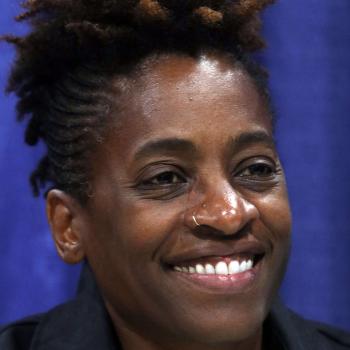
Author of such titles as Minnie's Boys, Feathers, Locomotion, and After Tupac and D Foster, Jacqueline Woodson won the National Book Award for Young People's Literature for Brown Girl Dreaming in 2014. She is also a recipient of a Newbery Honor, a Coretta Scott King Award and a Margaret Edwards Award.
Read aloud the poem “February 12, 1963,” the first poem in Brown Girl Dreaming, and encourage students to use Woodson’s free verse style to write a poem commemorating their own birthday or the birthday of a friend or relative.
After students draft a collection of images and ideas, encourage them to use the Line Break Explorer to experiment with ways to arrange their words for aural and visual effect. Students can also use the Acrostic Poems or Diamante Poems interactives to find other ways to represent a birthday through verse.
Jacqueline Woodson’s official site offers tips for readers, teachers, and caregivers to get the most out of the resources it offers.
This thirteen part interview also includes a transcript and other reader resources.
This page on the National Book Foundation site includes video of Sharon Draper presenting the National Book Award to Woodson’s acceptance speech and a reading from Brown Girl Dreaming.

John Venn the notable English logician, philosopher, mathematician and most notably the creator of the Venn Diagram was born on this day in 1834. In the diagram, circles are used to visually and logically sort groups to illustrate their relationships to each other. The creation is used in the fields of mathematics, psychology, literature, logistics, statistics, probability, but most significantly it used in school classrooms around the world.
Build a community within your classroom using Venn Diagrams.
Group Activity – Print out copies of the 3 Circle Venn Diagram graphic organizer. Arrange students into groups of three and supply them with the graphic organizer. Have students talk in their groups about themselves and the things they like to do. After a brief discussion, students document ways in which they are alike, ways in which they are like others in their small group, and ways in which they are totally unique. Have students display their diagrams and share them with the entire class.
Partner Activity – Print out copies of the 2 Circle Venn Diagram graphic organizer, or if students have access to a mobile device, download the Venn Diagram Mobile App. Arrange students into pairs within the classroom. Using the graphic organizer or mobile app have the students share information about themselves and their likes and dislikes.
This website provides a short biography, honors, pictures, and the obituary of John Venn.
This website provides a short biography about John Venn.